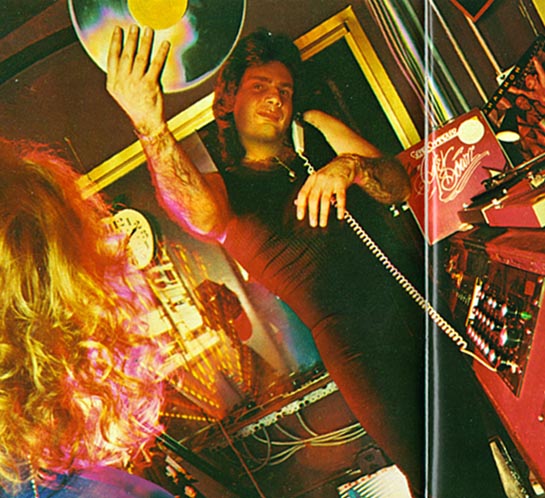Francis Grasso – The First Modern DJ

HOME BLOG CONTACTS Francis Grasso | The First Modern DJ Francis Grasso was an American disc jockey from New York City, best known for inventing the technique of slip-cueing and beatmatching (sometimes referred to as mixing or blending), which is the foundation of the modern club DJ’s technique. Francis started his DJ career in 1967 at […]
Detto Mariano interview part one
Today I introduce you a great italian musican: Detto Mariano. Orchestra leader, songwriter and music producer, He collaborated with many italian musician (Adriano celentano above all) and he made great film scores during 70s and 80s. This is the interview I had with him one year ago and now I had a few time to […]
Roberto Pregadio – Tribute
Roberto pregadio 1928-15/Nov/2010. Italian music KING.Italian Jazz pioneer.Great music composer. RIP WEB resources:– Scores– Discogs page– Edda dell’orso bio and all the scores (She featured on some Roberto Pregadio’s scores) [ENG]– more infos? please try… wiki italy web#1 audio interview [ITA] My favourite videos/songs of MAESTRO Pregadio: and… playing live @ the jazz club!! [ITA] […]
TEDDY PENDERGRASS A Tribute
ONE LOVEPlease support teddy’s memorial fund and charities
Wildchild – Renegade Master 1998
In memory of Roger McKenzie aka Wildchild (1971-1995) Renegade Master is a classic mastercut. I really loved and still love this track. FatBoySlim’s oldschool mix is unbelievable, and i remember the song in 1998… one of the best party songs of all time. Unfortunately Roger McKenzie aka Wildchild prematurely died in 1995, so he has […]
Daft Punk – Tribute Part 2
Daft Punk Digital Love Video Tribute Daft Punk – Something about us video tribute Singles Part Two (2000-2006) – One more time– Aerodynamic EP– Digital Love– Face To Face– Something About Us– Human After All Remixes– Prime Time of Your Life Ahttp://www.mediafire.com/?mmknuykyxtzBhttp://www.mediafire.com/?lo5rhnmjyynChttp://www.mediafire.com/?jmdmkijme24Dhttp://www.mediafire.com/?t0zmzmoonwa
Greg Wilson – Credit to the edit vol.1 (2005)
Bio:Greg Wilson is a DJ that made history in Manchester during the 80s. He spread the verb of electro-funk, a mixture of Funk with robotic Kraftwerk sounds. Wilson was known for playing jazz funk records with residencies in clubs in New Brighton between 1975 and 1980. At the start of the eighties, Wilson moved to […]
Daft Punk – Tribute
What can i say about Daft Punk? Fundamental. The mysterious French duo Daft Punk have never revealed their true identity, wearing an ever-changing selection of masks to cover their real faces in interviews and concerts. The media-shy duo have nevertheless become an absolute phenomenon on the 90’s music scene. Daft Punk have not only put […]
Gabriel Solis – Thelonious Monk and Jazz history in the making (2007)
Great book about a Jazz King and innovator. Buy a paper copy @ Amazon.com or try it
Lucio Battisti – Tribute
Here i will post my favourite Lucio Battisti albums. Brief bio:One of the innovator of Italian popular music, Lucio battisti is also one of the most appreciated italian singer of all times. He started his career in 1966 and from 1969 to 1994 he released 18 albums in his home country. He was known to […]